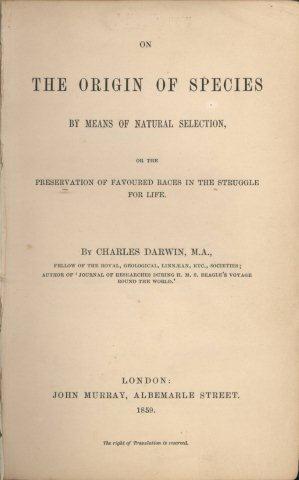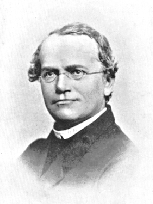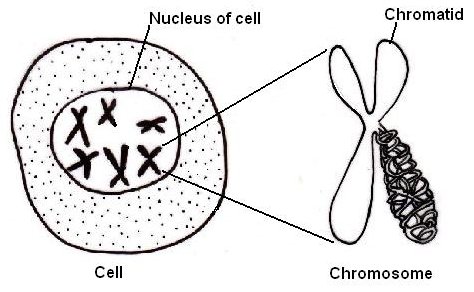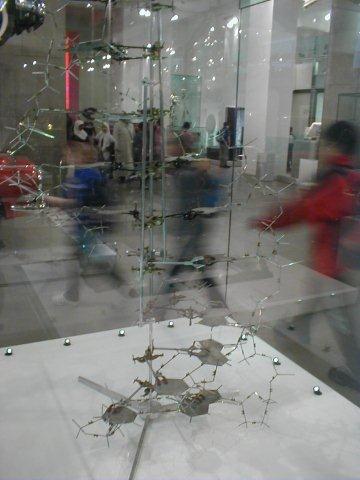Neodarwinism
What did Darwin tell us?
The first page of On the Origin of Species

In his most famous book, On the Origin of Species, Darwin explained how living things evolve and become suited to their environment. He developed his theory of evolution by means of natural selection through a combination of observations, especially of fossils, of how different species of animals and plants are found in different parts of the world, by doing experiments and by careful thinking. Put simply, Darwin showed that when living things reproduce, their offspring show differences (variation) and that some are better adapted to their environment than others. The best adapted ones survive and pass on their beneficial features to their offspring. Given long enough, these small differences build up and can result in new species. Darwin knew that parents gave their offspring their characteristics but he wasn’t sure of the mechanism.
Mendel and genes
 Gregor Mendel was an Austrian monk who was very interested in how living things inherited their features. He carried out hundreds of experiments with plants and, in particular peas, to try and find out how inheritance works and published his key results in 1866, although Darwin never knew about them – which was a pity! Mendel began to understand that offspring inherit characteristics from both parents but that the characteristics aren’t blended (like taking red and white paint and making pink paint) but that they are discrete. His most famous example was looking at the height of pea plants where he observed that if you breed a tall plant and a dwarf plant, you don’t get medium height offspring but instead either tall or dwarf plants. Even more importantly, Mendel discovered that the mixture you find always follows a set ratio; this helped him to understand that the parents must give their offspring a material which doesn’t get split up or diluted. He called the material ‘factors’, we now call them genes.
Gregor Mendel was an Austrian monk who was very interested in how living things inherited their features. He carried out hundreds of experiments with plants and, in particular peas, to try and find out how inheritance works and published his key results in 1866, although Darwin never knew about them – which was a pity! Mendel began to understand that offspring inherit characteristics from both parents but that the characteristics aren’t blended (like taking red and white paint and making pink paint) but that they are discrete. His most famous example was looking at the height of pea plants where he observed that if you breed a tall plant and a dwarf plant, you don’t get medium height offspring but instead either tall or dwarf plants. Even more importantly, Mendel discovered that the mixture you find always follows a set ratio; this helped him to understand that the parents must give their offspring a material which doesn’t get split up or diluted. He called the material ‘factors’, we now call them genes.
Around 1900 three different groups of scientists rediscovered the work of Mendel by carrying out similar experiments. In honour of Mendel, his findings, supported by those who later repeated them, are called the ‘Mendelian Laws of Inheritance’.
The discovery of DNA

Following the work of Mendel, scientists had a good idea about how inheritance worked but they were not sure of the molecules involved.
Chromosomes could be seen under the microscope but people didn’t know what they were made of or how they controlled the cell or characteristics.
Two scientists working at Cambridge University, James Watson and Francis Crick, were very interested in the structure of molecules and started to investigate the problem. It had already been shown by the early 1950s that a molecule called Deoxyribose Nucleic Acid (DNA) contained the genes, but no-one knew how this was done. It had also been shown that chromosomes are made of DNA plus proteins.
Finally in 1953 Watson and Crick unveiled a model of DNA – the famous double-helix. This structure showed how DNA could copy itself by unzipping down the middle followed by copying of each strand of the helix. It also showed after a few more years of work how the genetic code works.
Crick and Watson, and another scientist, Maurice Wilkins from King’s College London, received a Nobel Prize for their groundbreaking work.
A modern understanding of evolution

Once the structure of DNA was found, our understanding of how evolution works became much more advanced. Knowing the structure of DNA gave scientists a way of understanding how inheritance happens, how cells are controlled and how embryos develop.
In the past 50 years there has been a huge amount of work looking at molecular biology.
(Right) Reconstruction of the Crick and Watson model of DNA
This has revealed some important pieces of evidence that have helped us understand more about evolution:
- all humans can be linked through a small loop of DNA that is not found inside the nucleus (it is in special cell organelles called mitochondria). This DNA is inherited from our mothers (via the mitochondria in her egg).
- all living things use the same molecule (called ATP) as an energy source
- DNA can change (mutate) in various ways
- Mutations in DNA may have no effect, be detrimental or beneficial
Where does the evidence come from?
Piecing together the evidence for evolution isn’t easy but the information from molecular biology is an important piece of the jigsaw which helps scientists to make links between experiments, observations, work on fossils and mathematical modelling; much like Darwin did over 150 years ago (except that he didn’t like maths!).
The video below explains some of the way that people have responded to Darwin’s theory, when reflecting on what this means for a religious view about the Origin of life.